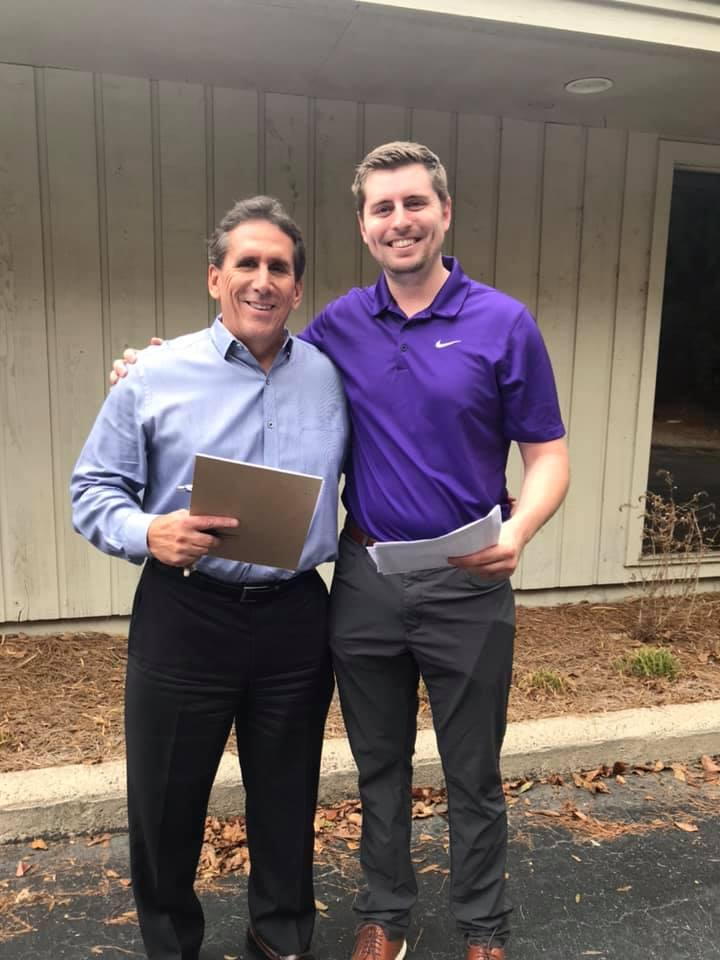OUR CHIROPRACTORS AT CHIROPRACTIC PARTNERS
PROVIDE PAIN RELIEF FOR BACK & NECK PAIN, HEADACHES, SCIATICA, INJURIES AND MORE!
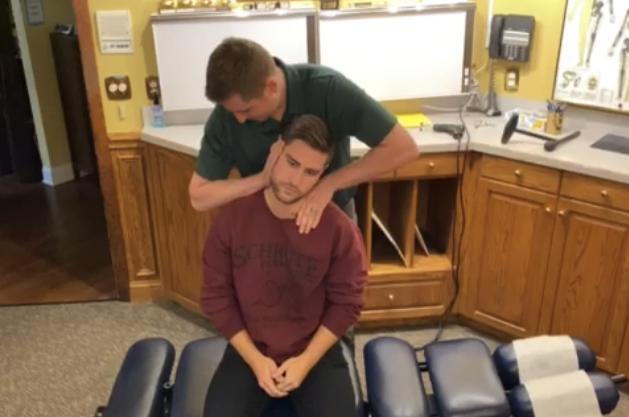
- posted: Nov. 26, 2019
We often get asked what the adjustment does, what the popping sound is, and a myriad of other questions in a clinical setting where we may not have the time to break down all the different aspects of manual therapy. This can sometimes leave patients with more questions than answers. There’s a lot of different sources of information out there on the subject, some good, some not so good, and even some bordering the slanderous.
Whether it’s referred to as “popping my back” or “cracking my bones”, chiropractors are primarily known for one thing: adjusting. First let’s address the fact some people will also call adjusting a “manipulation”, which is the same thing in application. For the purposes of this article we’ll simply refer to both as “adjustments”. There are other manual therapies, such as articulations and mobilizations that are essentially the same as a manipulation, just to a much lesser degree. Also, we’re going to limit our discussion to spinal adjustments since adjusting the extremities can be quite different.
What ISN’T happening
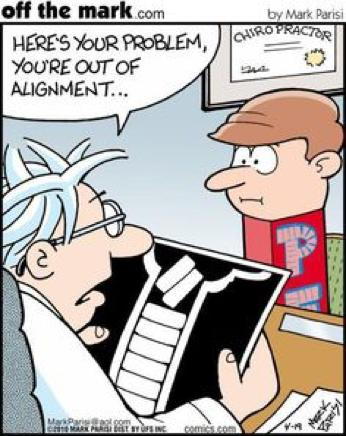
In the early years of chiropractic (over 100 years ago) the common assumption of what was happening was that the adjustment was realigning bones. It was a logical conclusion given the information at the time. The patient had a sore spot, that spot didn’t move well -> the doctor pushed on the spot, heard a pop, the pain went away, and the spot moved better. This was a fairly logical conclusion, given the context. In fact, some of the non-evidence-based schools of thought in the profession still think this is the case. However, in the late 1970’s an improvement in technology flipped our understanding on its head. The fluoroscopy machine was invented, which is basically just a motion x-ray machine. This allowed researchers to watch what was happening to bones as the adjustment was happening and what happened after, all in real time. To everyone’s surprise, bones never actually changed alignment in any way. On top of that, what was thought to be the adjustment of a single bone turned out to be that no less than 3 bones were affected. It was surmised that:
- No less than 3 segments were affected.
- Facet joints are gapped.
- Bones went right back to where they were before the adjustment.
- Movement was always improved after the adjustment.
Decades of research has been done since these first experiments, all concluding the 4 main findings. This is NOT to say that what chiropractors were doing (or still are doing) was wrong, simply that the UNDERSTANDING of what was happening has changed.
Here’s a quality clip of how the motion x-ray looks in real time! motion x-ray clip
What’s the “popping” sound?
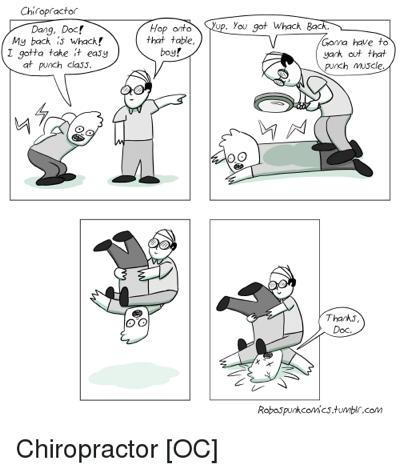
People often hear the pop and imagine *insert favorite 1980’s action movie hero* sneaking up on an unsuspecting bad-guy, putting them in a choke hold, and in one violent motion spinning the ne’er-do-wells head around, ending his reign of terror. Sammy Hagar starts wailing on the guitar in the background, there are explosions. It’s quite the scene. Luckily (unless you’re into the idea of your life having a soundtrack) none of that will happen. As mentioned above, one of the colloquialisms about the adjustment is that we are “cracking bones”, which has an obvious negative connotation to it. We’ll talk about where exactly in a bit, but the popping sound comes from the joints in the spine (where two bones meet, not the bones themselves).
The scientific term for this phenomenon is called “cavitation”. It’s roughly defined as “rapid changes in pressure in a liquid leading to the formation of small vapor-filled cavities”. When the joint is gapped, the pressure changes, forming a bubble. There is dispute as to whether the cracking noise is from the formation of that bubble, or the popping of that bubble. Either way, the cracking is exactly the same in your spine as it is in your fingers, toes, etc. The fluid that coats and lubricates the surfaces of your joints is the fluid in which the air forms. So, if you’re not afraid to pop your fingers, you shouldn’t be afraid to have your spine adjusted! Here’s a video of the whole process where you can see the bubble and everything: clip of "air bubble" in a spinal adjustment
Where is it happening?
There are a lot of moving pieces and parts in the spine, especially when considering where the ribs attach. In the spirit of simplicity lets focus on the facet joints. The medical term for the facet joint is “zygapophyseal” joint (aren’t you glad you don’t have to read that out loud?!) and they are the only bony place that the bones of the spine touch each other. There are obviously muscles, ligaments, and intervertebral discs that also contribute to the overall structural tensegrity of the spinal column, but the facets are the guiders of motion. Therefore, when we find motion restrictions in the spine we can almost guarantee that there’s restriction in those facet joints. There are some exceptions, but such is life. Pay extra attention to the right side of the diagram below to see the fluid in the facet joint!
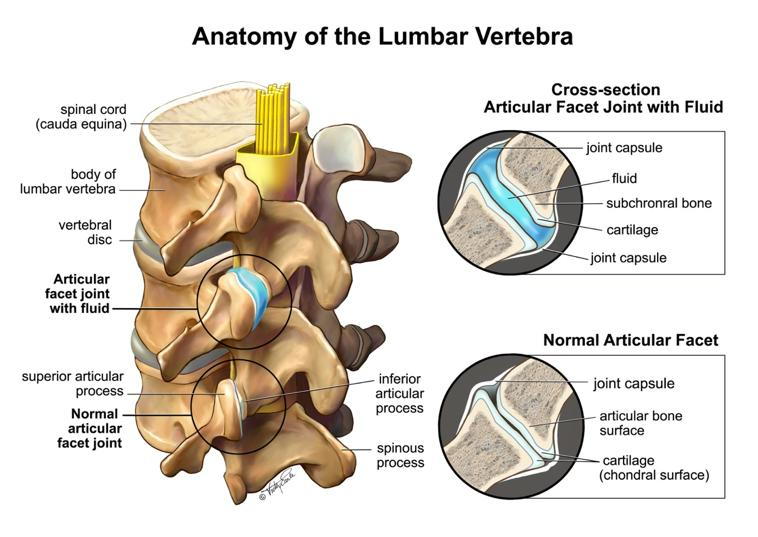
How do you find where to adjust anyways?
This has been a divisive subject for as long as chiropractic has been around. Answers here range from laying leg length, to functional movement screens, to motion palpation. The top two we will discuss is the use of x-ray line drawing and motion palpation. While taking measurements and drawing lines on an x-ray might seem like a good approach, reality eventually hits. Drawing lines and taking measurements implies an objective standard by which to measure from. However, this is not the case, because (shocker) humans aren’t symmetrical! Spinous processes are crooked, transverse processes aren’t the same length, pedicles are different diameters, and this is the rule, not the exception. Here’s an easy example of what a vertebra can look like, looking from the top down: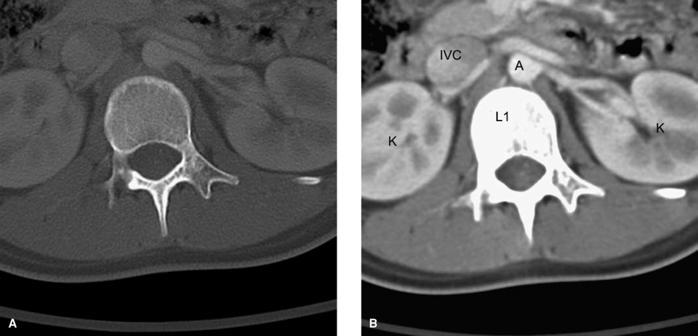
With motion palpation, we bypass almost all of the anatomical variations that can throw off the analysis (obviously things like fusions and facet tropism* are considered). The analysis becomes more based on function rather than structure, which lines up better with our modern understanding of what’s happening. It’s also very easy to then make sure our adjustment did the trick: just check again! The one downfall of motion palpation is that, like any other skill, it takes time to master. That’s where those hundreds of hours at school come in. And like fine wine, it gets better with time!
- An anatomical variation in which 2 joints on the same segment are at different angles.
What are the benefits of an adjustment?
The immediate benefits that essentially everyone experiences (and the primary reason people come to the chiropractor) is pain reduction. Given a somewhat tumultuous past, it’s the pain-relieving effects of the adjustment that has nearly singlehandedly kept the profession alive. It is our cornerstone of treatment, our most valuable and most controversial tool at the same time.
So how does it work? To avoid a long-winded dissertation on pain neurophysiology with 17 citations, let’s use an example. You know the phrase “walk it off”? A basketball player goes for a layup, gets blocked, and awkwardly lands on his ankle. He gets ups, hobbles a few steps, and a few moments later he’s running up and down the court again as if nothing happened. But at the press conference he’s got his size 24 foot on the table with a bag of ice taped around it talking about an ankle sprain. As with anything there are a number of different factors but the key factor here is MOTION. The ball player kept moving. Your brain dedicates its biggest, fastest sensory nerves to movement, while the pain fibers get the J.V. players that moonlight as chess club officers. Because of this, movement perception literally drowns out pain perception; which is why when you bump your head the first thing you do is rub the afflicted area. You innately know this is how to take the edge off the incoming throbbing lump.

All that is to show how motion put into an area helps to decrease pain in that area, and that’s EXACTLY what the adjustment does. Introduce specific motion in an area that needs it, restoring normal movement and allowing your body to do what it instinctively does.
At Chiropractic Partners we obviously perform the adjustments, but also many other modalities, as well as exercise programs and stretches to help the pain reducing effects of the adjustment last longer, so you can go longer between treatments. As much as we love to see you, you’ve got a life to live. You don’t have time for pain.
Are adjustments for everyone?
The short answer is no, some people and situations aren’t well suited for standard manual adjustments by hand. These special populations include those at the very beginning and very end of life. There are definitely things certain specially trained chiropractors can do for babies and small children, but they’re obviously NOT what you would see done to adults. As with the elderly, they’re most well suited for more gentle techniques often done with special instruments. These instruments are more than capable of getting the job done for them.
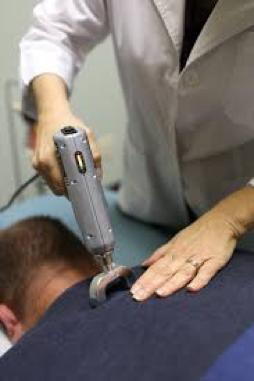
Certain medical conditions, like vascular weaknesses or connective tissue disorders can make manipulation inappropriate for the cervical spine (neck). Some patients come to see us and refuse to have their necks adjusted, and that’s totally fine. We have other ways to get the job done. We will not insist over and over to treat you how you aren’t comfortable being treated. We are patient centered and treat the patient, not a certain technique system.
Lastly, some patients may have SOME benefit from chiropractic care, but are overall better off being seen by a different clinician. The two most common instances of this are patients who have an issue too advanced or serious for chiropractic care and are, unfortunately, more appropriate candidates for surgery; and those who are better served by physical therapy as their issue is more rehabilitation or functional in nature.
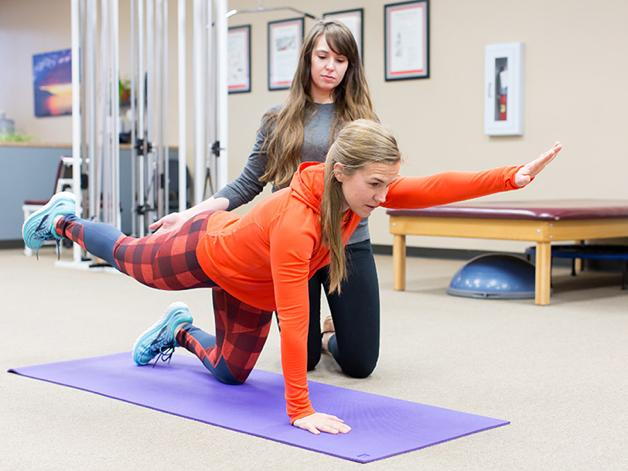
At Chiropractic Partners, we’re focused on what is best for the patient, and sometimes that isn’t us. We maintain great working relationships with a variety of different healthcare providers so we have full confidence in making a referral to another specialty.
Article credit: Dr. Michael Woodbury, at our North Raleigh Chiropractic Partners office.
Pictured below Dr. Matthew Schmid (left) Dr. Michael Woodbury (right)